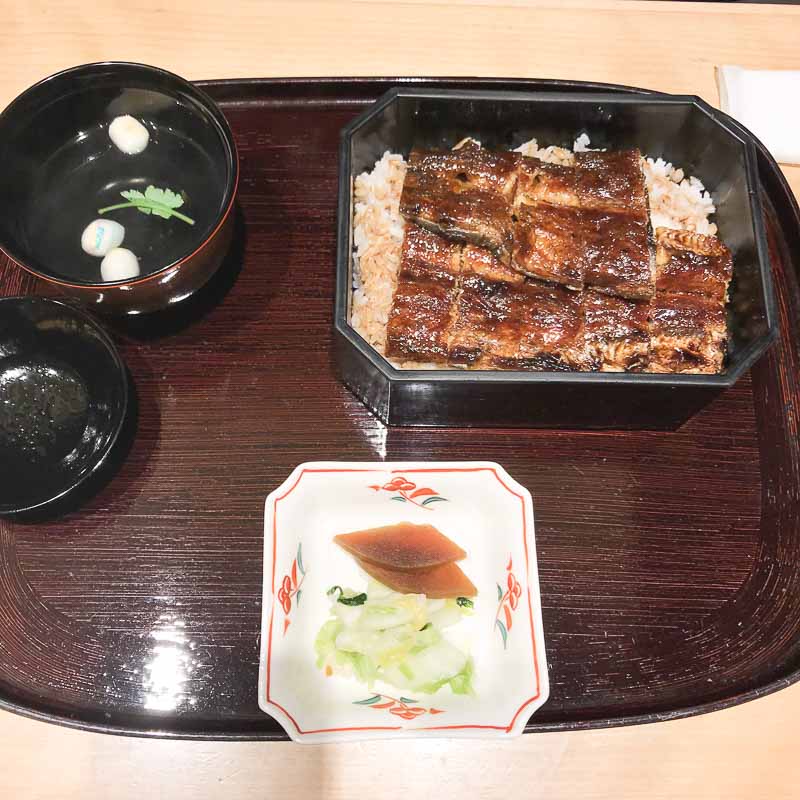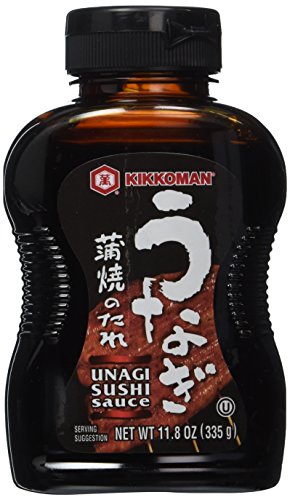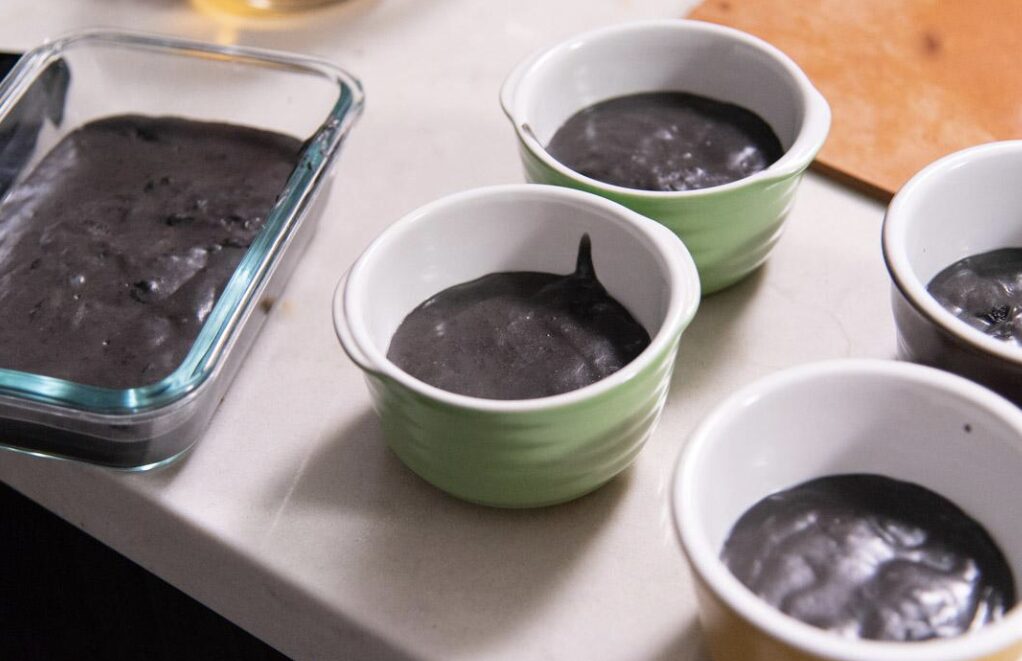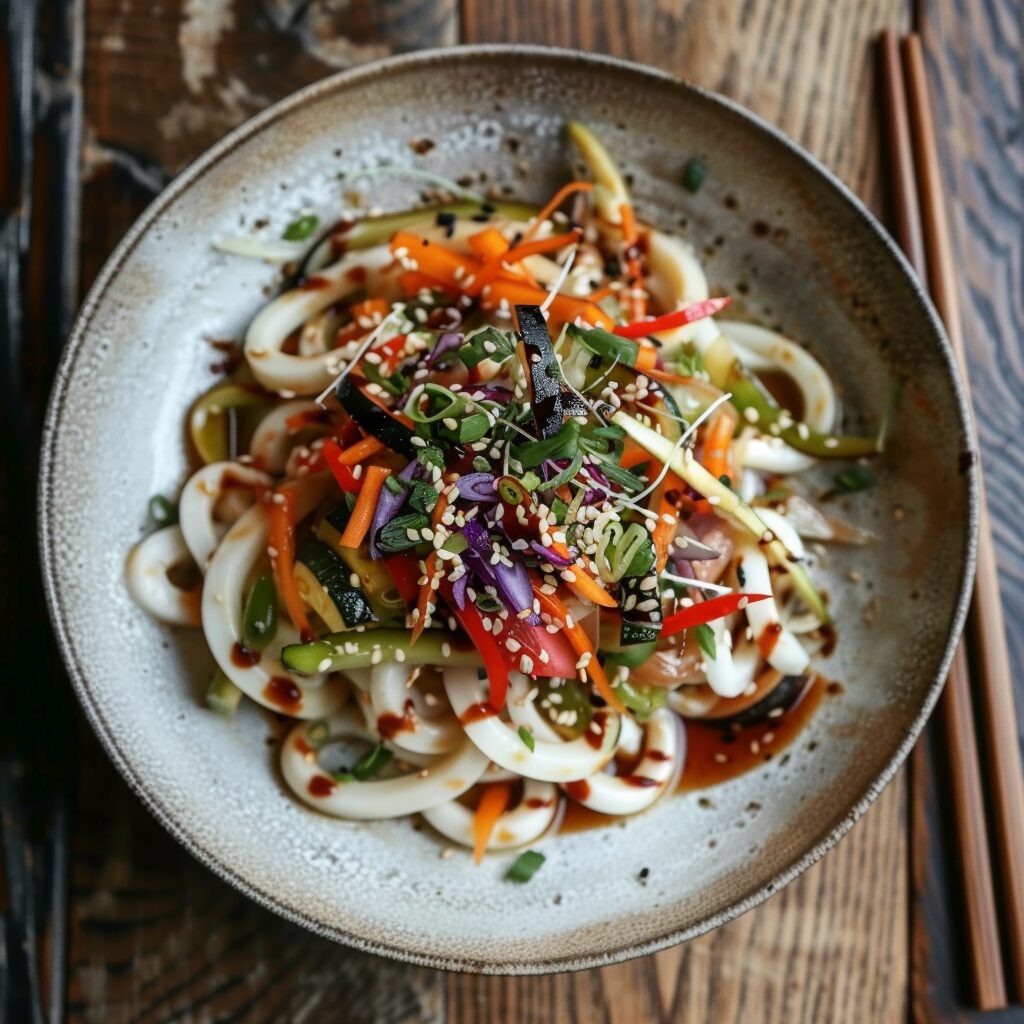Kabayaki sauce is traditionally used to season unagi (grilled eel) in Japan. But you can use it for many other foods too, and it’s a tasty way to change things up if you want something different. Here’s one of my favorite ways to make it.

What is Kabayaki?
Kabayaki is a method of cooking and preparation of freshwater eel (unagi or anago) thats been used for centuries in Japan.
The origins of kabayaki unagi dates back to the Edo period (1603-1868), when it was considered a luxury food item and was often served at special occasions and celebrations.
During the Edo period, unagi was primarily caught and consumed in the Tokyo area, (which was known as Edo at the time.)
The eels were caught in the nearby rivers and canals and were considered a delicacy due to their rich flavor and texture.
Now, it still may be considered a delicacy but is much more affordable now that it’s farmed.
Unagi is now a popular dish throughout Japan and is typically served grilled and basted with a sweet soy sauce-based sauce, it is called as “unagi no kabayaki.
It is often served over rice in a dish called unadon or unaju, which is a type of donburi (japanese rice bowl.)
It’s also a dish you might find served in bento boxes and also as part of sushi platters.
Kabayaki is a common dish in many unagi restaurants and izakaya (Japanese pubs) and enjoyed all throughout Japan.
Though kabayaki sauce is traditionally used for eel, you can also use it for other foods.
Curious?

What’s Kabayaki Sauce Taste Like?
When speaking of traditional kabayaki, as I mentioned above it means eel is part of the dish.
It’s first filleted, then butterflied, and grilled over charcoal while being basted with a sweet soy sauce-based sauce called tare.
Kabayaki makes for an extremely flavorful dish that’s sweet, savory and has a slight smoky flavor.
Kind of like how gravy made with drippings makes it special, so do the eel drippings and smoke from the grill.
It’s flavor is complex, rich and full of umami.
Now, if you’re not using eel, don’t fret.
Your kabayaki sauce will still taste amazingly delicious.
It’s basically like teriyaki but less sweet and more savory.
Of course you can adjust my recipe to your tastes.
If you want of course.

The Other Unagi Dish – Hitsumabushi
Cant really have a discussion on kabayaki without mentioning Hitsumabushi.
Hitsumabushi is a traditional dish from the Nagoya region of Japan, one of it’s famous foods (meibutsu).
This is a little bit of a different preparation of eel and served differently.
To illustrate, with the food pictured below, you’d divide the hitsumabushi into 3-4 parts.
- You’d leave one part in the box and eat it as it is.
- You’d eat the second portion with condiments such as green onions, dried seaweed, and wasabi.
- You’d eat the 3rd portion in a bowl, top with condiments, and pour over the dashi, soy, mirin seasoning or
tea to make dashi ‘chazuke - The 4th you can do as you wish 🙂
Want to try it yet?

Don’t Want to Make Kabayaki Sauce?
Consider eating it on your next trip to Japan.
Really.
If you’re planning to visit, usually the spring/summer time is when eel ‘season’ is in full swing in places like Shimantogawa, Japan.
However, even outside that main season, it can be enjoyed year-round thanks to the advances in cultivation and preservation methods.
You can easily find it in supermarkets and depa-chika or unagi specialty restaurants.
On our last trip there we missed trying it in Kochi there due to the Golden Week holiday but we instead found a place in Osaka.
If you ever make it out there, let me know and I’ll live vicariously through you.
you can get the premade version here
disclaimer: it might not taste as good as the one below 😮
Kabayaki Sauce: The One Thing You Must Use With It
whenever you use kabayaki or eel sauce to season your food, try adding a few dashes of sansho (japanese pepper.)
it’s one of the best ways to complement the rich, dark flavors with something slightly spicy and peppery.
here’s a link to some sansho if you need a bottle. (note: the description says ‘szechuan’ but these are not szechuan, in case you’re confused…)
and here’s an unagi set ready to eat-
just add hot rice!
(maybe you dont need to go to japan after all – phew!)
Don’t Fear the eel, Kabayaki it!
Here are some facts about eel:
- Eels are elongated fish that can be found in freshwater and saltwater environments all over the world.
- There are two main types of eel: freshwater eel (unagi or anago in Japanese) and saltwater eel (conger eel or saltwater eel). I prefer unagi, what about you?
- Eels are known for their slimy skin and their ability to wriggle and contort their bodies.
- Eels are carnivorous and prey on smaller fish, crustaceans, and worms. Ouch!
- Eels have a unique life cycle that involves several stages, including the leptocephalus (larval) stage, the glass eel stage, and the elver stage.
- Freshwater eels migrate to the sea to spawn. The adult eels die soon after spawning, but the young eels migrate back to freshwater.
- Eels are considered a delicacy in many cultures, especially in Japan. That’s why if you go to a restaurant that specializes in unagi in Japan, you can easily pay over 6000 yen ($60) per person for a set lunch or dinner
- Eel populations have been in decline in recent years due to overfishing and habitat loss. Efforts are being made to protect and conserve eel populations. Some species of eel, such as the European eel and the American eel, are considered critically endangered by the International Union for Conservation of Nature (IUCN).
- Eels have a unique characteristic in their blood vessels, it contains a unique protein called “Eel calcitonin” which helps to lower the blood pressure and also helps in the treatment of osteoporosis. Plus they’re an excellent source of omega-3 fats (the good ones)
Kabayaki Sauce- Common Questions
What’s Kabayaki Sauce Made of?
The base of kabayaki sauce includes sake, mirin, soy sauce and sugar.
True kabayaki sauce will include eel and a bit of the flavor from the grill (smoke), however, most of us won’t have access to eel as it cooks (the first time.)
Is Kabayaki Healthy?
Yes, it can be. especially when eating kabayaki eel. a delicious, savory and nutritious way to get protein and some good healthy fats into your body.
Is Kabayaki Sauce the Same as Eel Sauce?
Yes, it’s a japanese cooking technique created for cooking eel (unagi)
Can You Put kabayaki Sauce on Sushi?
Yes, it makes a delicious seasoning. use sparingly.
PrintKabayaki sauce in 10 minutes (fast)
Kabayaki sauce is traditionally used to season unagi (grilled eel) in Japan. But you can use it for many other foods too and it’s a tasty way to change things up if you want something different.
Ingredients
- 1/4 cup sake
- 2 Tbsp mirin
- 2 Tbsp soy sauce
- 1/2 Tbsp sugar
Instructions
- First measure out all ingredients for the sauce and combine in a sauce pan.
- On medium heat bring to a simmer and allow to reduce, until it gets slightly thick 7-10 min.
- If you want it thicker or more concentrated cook 3-5 minutes longer, but watch closely to prevent burning.
- Remove from heat and drizzle over your favorite unagi (eel), tofu, fish or sushi!
still here?
Here are a few of my recipes where you can enjoy kabayaki sauce – without the eel!












Konnichiwa! (Hello!) I'm Pat Tokuyama, a Japanese tofu cookbook author, who travels for music, food, and adventure. If you like Japanese tea, checkout some of the newestorganic japanese tea, matcha bowls and noren and more!
** Curious about the Plant Based Japanese Cooking Club? ** Learn more here!